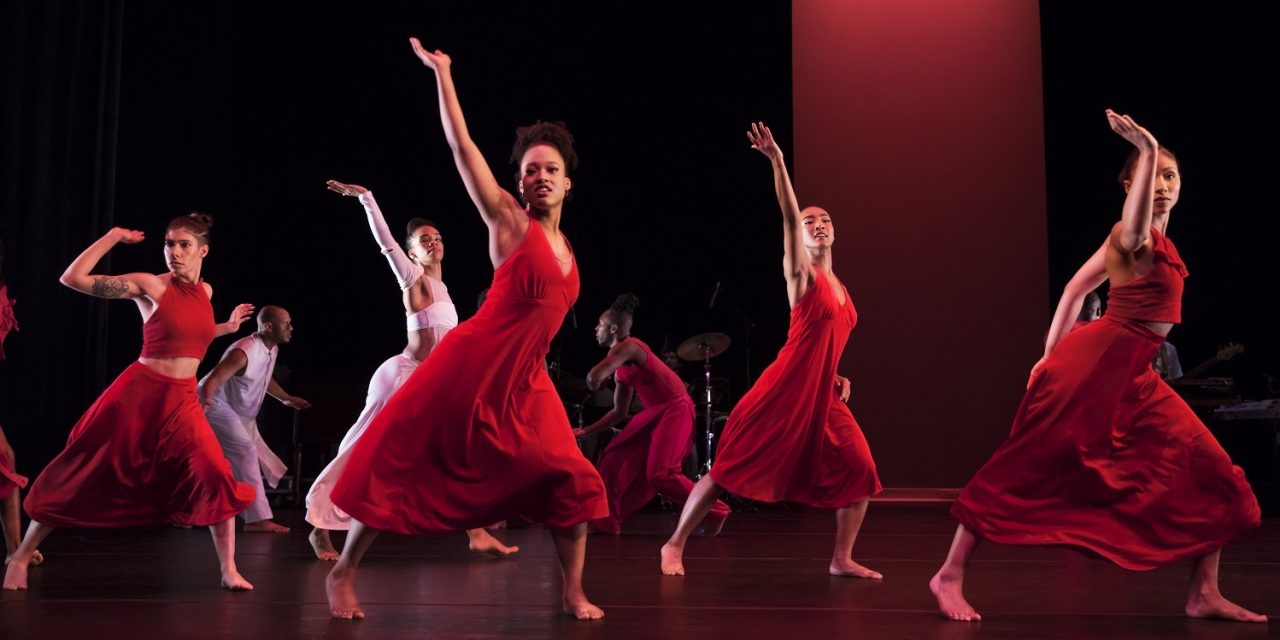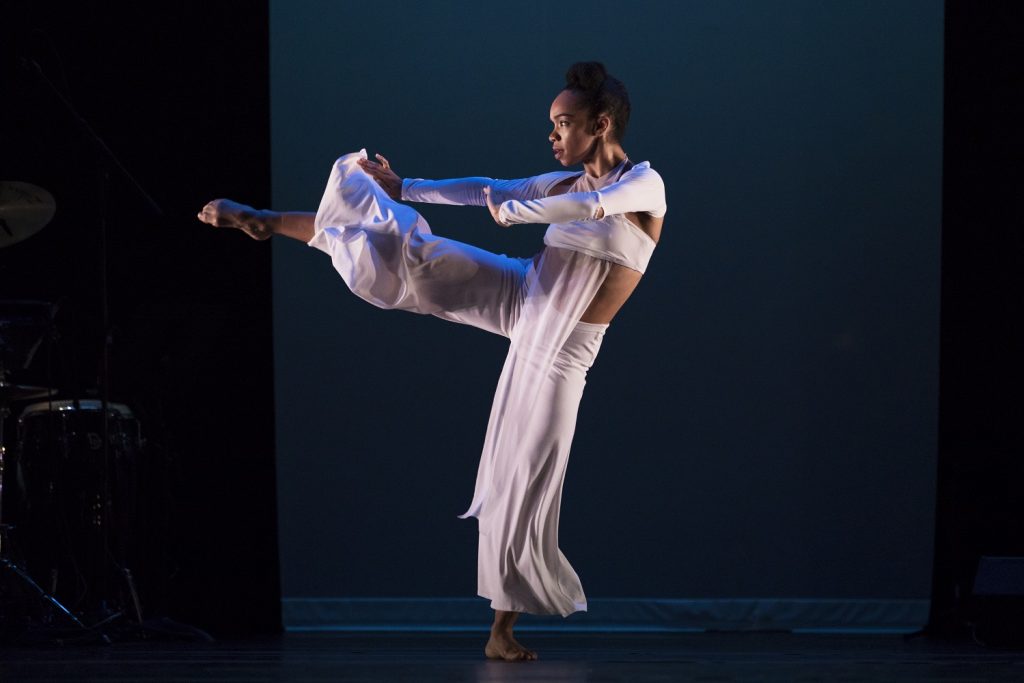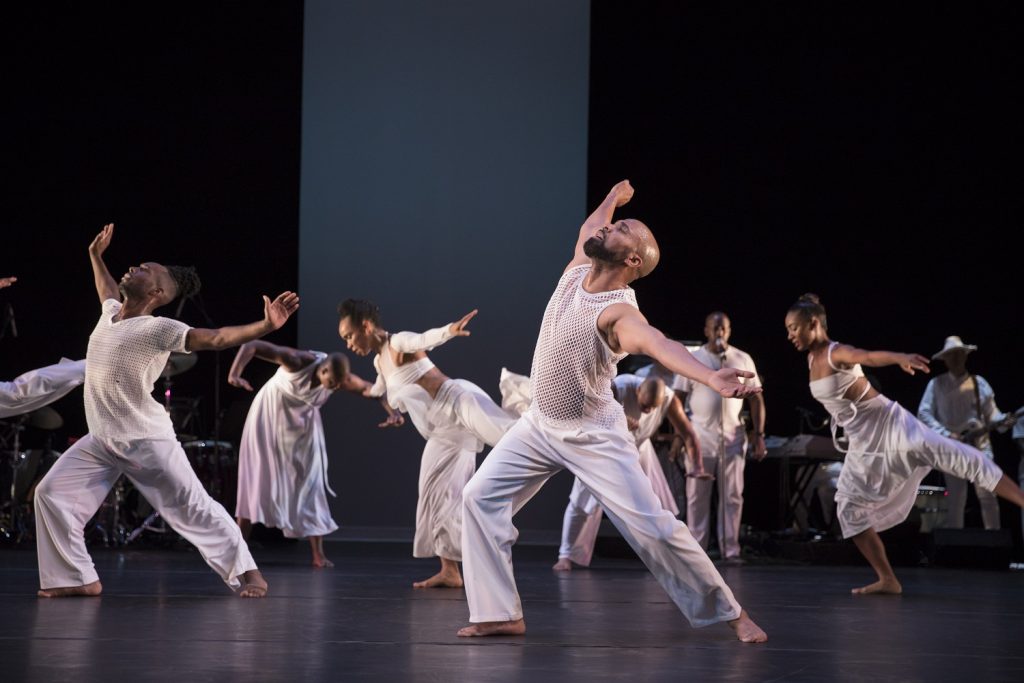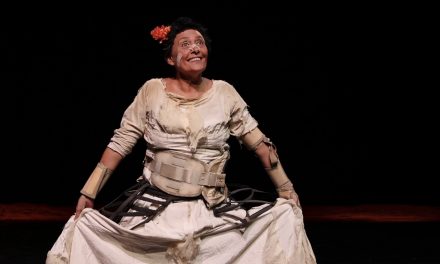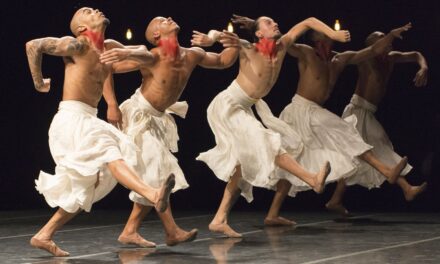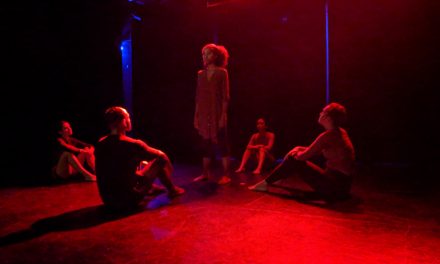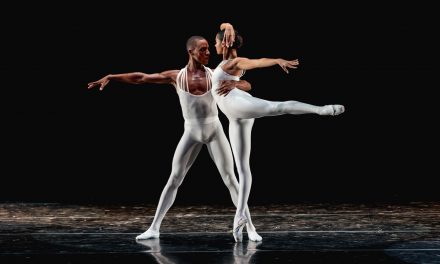Choreographer Ronald K. Brown founded his company EVIDENCE, A Dance Company in 1985, and in 1999 he choreographed a work for the Alvin Ailey American Dance Theater titled Grace, which some have called the Revelations of this generation. Twenty years later, on November 12, 2020, Brown’s Grace was streamed by UCLA’s Center of the Art of Performance (CAP UCLA) and I must say I tend to agree with this assessment. It is an extraordinary work and the dancers who performed it are some of this country’s best.
In addition to creating Grace for the Ailey company, Brown has choreographed original works for Ailey II, Cleo Parker Robinson Ensemble, Dayton Contemporary Dance Company, Jennifer Muller/The Works, Jeune Ballet d’Afrique Noire, Ko-Thi Dance Company, Philadanco and others. He choreographed Regina Taylor’s award-winning play, Crowns and won an AUDELCO Award for his work on that production. Brown is Co-Artistic Director of RestorationART Youth Arts Academy Pre-Professional Training Program / Restoration Dance Youth Ensemble, on the faculty of The Juilliard School and a member of Stage Directors & Choreographers Society
EVIDENCE is based in Brooklyn, New York and Brown states that his work integrates African dance with contemporary choreography and spoken word, casting his own unique view of all the human experiences into his art. Grace is a very spiritual work, with half the cast dressed in white and the other half in red. According to Brown, the first figure that appears through a beautifully lit opening center stage is God in human form. The others in white represent angels coming to Earth to round up people who did not understand God’s grace, represented in red. The gorgeous costumes that are similar but each one unique were designed by Omotayo Wunmi Olaiya a Brooklyn, New York based singer, songwriter, performer, and fashion designer who was born in London, and raised in Lagos, Nigeria.
Following the performance of Grace, Director of Education & Special Initiatives Meryl Friedman moderated a highly informative conversation between Brown and Barry Brannum, a dance artist who is currently a PhD candidate (ABD) in UCLA’s Department of World Arts and Cultures/Dance. While talking about this work and how he considers it an homage to Alvin Ailey, Brown said, “One avenue to the piece was knowing how much Mr. Ailey loved Duke Ellington. Because of my point of view and what I like to make dances about, I went to Duke Ellington’s sacred concerts. The program credits list the music performed live onstage as Come Sunday by Duke Ellington, Gabriel by Ray Davis Jr. & Peven Everett Licensed from Large Music LLC 1996 All Rights Reserved, Bless It & Rock Shock by Roy Davis Jr., and Shakara by Fela Kuti. It was beautiful and inspiring music that Brown so masterfully and musically wove his extraordinary movement through, movement that felt continuous, but accented with dramatic and pregnant stillness that spoke volumes.
Here, Ellington’s Come Sunday is sung by a man. Brown, however, presents God as a woman. After performing a beautiful solo, she is slowly replaced by the rest of the cast and Brown’s masterful choreography begins to tell a story of angels versus the irreverent humans. Solos shift into duets or trios; unison sections transform into canons that end with dancers lined up center stage perpendicular to the audience. Whether it is slow or fast, the movement is continuous and physically demanding for the dancers, who often enter and exit the stage with simple but commanding walks. These walks never become repetitious, however, because of how Brown weaves them into the on-going movement story.
Grace is not a narrative story, but one begins to sense the spirituality and the conflict by the physical conversations that Brown sets up between dancers and we soon join them on their spiritual journey. The performers are incredible actors because one never feels that they are acting. They are living this movement and it lives inside them.
There is a powerful all male section that begins as a solo and builds into a quartet, only to deconstruct itself. It is filled with turns and amazing leaps that finish with the men very briefly crawling on all fours, only to soon be airborne again.
Just before the work concludes, the entire cast is now dressed in white and one knows that the wayward humans have once again found God’s grace. During this final section, there are beautiful duets that feel more like verbal conversations, though no words are spoken. Dancers exit with a slow bowing movement performed to a fast tempo music, making the movement even more powerful.
A male singer enters, also dressed in white, and the final section begins. Here, Brown uses organized chaos where he has two solos working amidst two separate group dances. It is as if the three rings of a circus have moved close together to create over-lapping arenas. Breathtaking! Grace ends with a strong feeling of reverence as the dancers move into the center light.
Brown said that his ancestors are always present when he is working in the studio, and it is clear that he is listening intently.
Another element of EVIDENCE is that the dancers represent a wide variety of body types and they all are absolutely stunning. The cast of Grace included Michael Battle, Arcell Cabuag, Stephanie Chronopoulos, Joyce Edwards, Valeriane Louisy Louis-Joseph, Annique Roberts, and Keon Thoulouis; with Guest Artists Kirven Douthit-Boyd, Hannah Alissa Richardson, Randall Riley (courtesy of TU Dance), and Matthew Rushing (courtesy of Alvin Ailey American Dance Theater). Apprentices: Paris Jones and Elaisa van der Kust.
Live Music was performed by Peven Everett and Gordon Chambers. Music Supervision was by Peven Everett, with Sound Design and Engineering by Dave Wegner. The musicians included: Mario Abney, trumpet; Chris Bruce, guitar; Dan Chmielinski, bass; Peven Everett, keys; Julius Rodriguez, keys; Abraham Rounds, percussion; Jake Sherman, keys; and Corey Wallace , trombone.
The original lighting for Grace when it was created for Alvin Ailey American Dance Theater was by William H. Grant. The original lighting of the dance for EVIDENCE was by Brenda Gray, and for this presentation of Grace the Lighting Re-creation and Technical Director was Tsubasa Kamei.
Brown also taught a community class on Friday, November 13 where all levels of dance skills were welcome, and on Saturday, November 14 there was an online conversation with Brown and special guests to explore both the aesthetic forms of Grace as a way of artistic expression and the human forms of grace as healing and empowerment.
Grace was originally choreographed for the Alvin Ailey American Dance Theater in 1999 and became a part of the EVIDENCE repertory in 2003.
To visit the Ronald K. Brown: EVIDENCE/A Dance Company website, click HERE.
To learn more about UCLA’s Center for the Art of Performance (CAP UCLA), click HERE.
Written by Jeff Slayton for LA Dance Chronicle.
Featured image: EVIDENCE performing Grace, choreography by Ronald K. Brown – Photo by Julietta Cervantes

